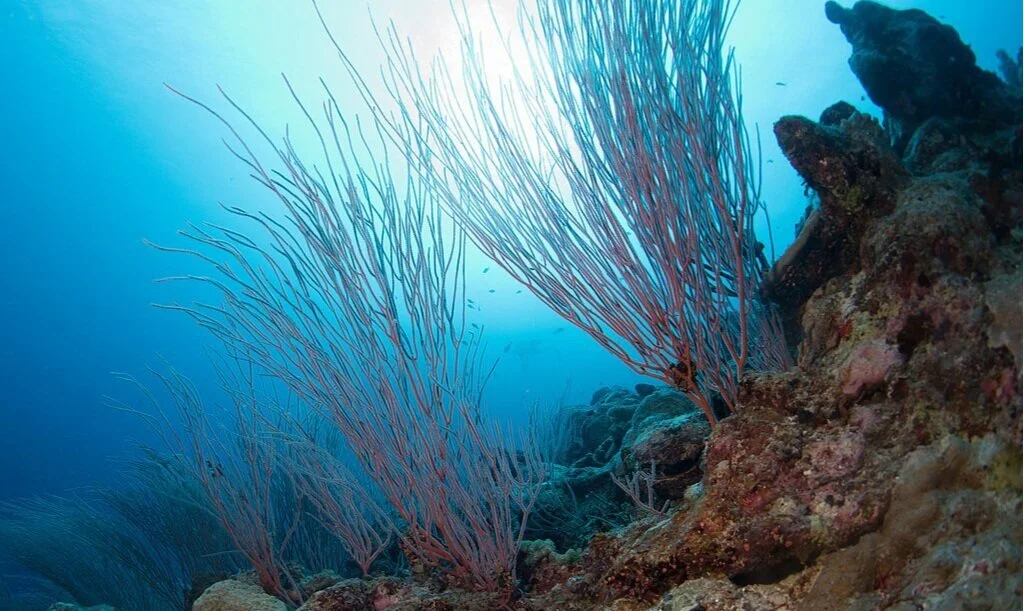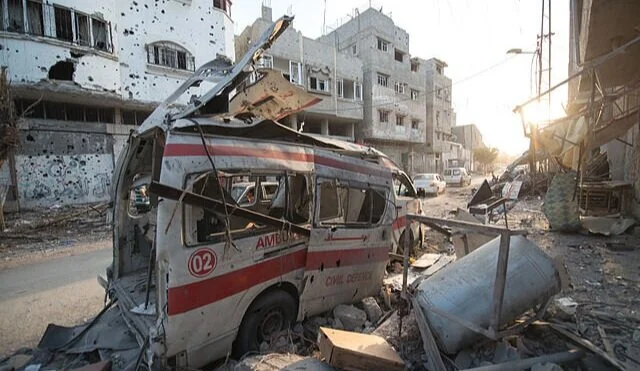Rethinking Pink: How breast cancer patients became environmental activists
In 1994, a group of breast cancer patients and survivors took to the streets of San Francisco Bay in a mass mobile protest, leading the very first “Toxic Tour” of the city’s purported “cancer industry.” In a bid to reveal that corporations were dumping toxic waste in the vicinity of residential communities and allowing carcinogenic agents to infiltrate the environment, women of the Toxic Links Coalition (TLC) began to gather annually outside various headquarters and government agencies to urge people to realize the products of unrestrained industry were having life-threatening consequences.
Throughout the 80s and 90s, San Francisco had one of the highest breast cancer incidence rates in the world among white women and one of the highest breast cancer mortality rates in the U.S. among non-Hispanic Black women. It seemed natural that women living in the city would begin to look to their home and work environments to explain these unprecedented numbers. Risk levels were found to be particularly high in Bayview Hunters Point, an area with a legacy of environmental racism.
In the early 1980s, the burgeoning environmental breast cancer movement (EBCM) began to take hold, backed by increasing evidence from TLC member, Breast Cancer Action, the first health organization and feminist health alliance to link the disease to environmental causes. Consisting largely of women and community-based health cooperatives, EBCM began to overturn the idea that the disease arose solely from individual health failings, genetics, and lifestyle choices. They instead revealed the pressing need to acknowledge external risk factors in cancer diagnoses.
Laying much of the movement’s theoretical groundwork in her 1980s memoir “The Cancer Journals,” self-described ‘black, lesbian, mother, warrior, poet” Audre Lorde stated, “I’m not being paranoid when I say my cancer is as political as if some CIA agent brushed past me in the A train on March 15, 1965 and air-injected me with a long-fused cancer virus.” Her linking of her illness to likely environmental origins opened a wider narrative about how geography, race, class, and gender inequality play into the complex surfacing of the disease and the failure of organizations such as the American Cancer Society (ACS) to publicly recognize its wider causes.
“The absence of widespread support for the EBCM plays into the capitalist protection of the chemical industry and monopolizing of the environment for profit as well as wider attempts to depoliticize women’s health movements.”
Years before in her 1962 environmental science book “Silent Spring,” Rachel Carson had made similar associations, arguing that the increase of cancer diagnoses in the West ought to be recognized as a man-made phenomenon, controllable by the number of carcinogenic pesticides released into the environment. Both Lorde and Carson were censored for critiquing the ways that controlling and masculinist attitudes towards nature were impacting public health. Carson was reproached for hysteria and, as biographer Joni Seager describes, for displaying an “un-American” attitude towards industrial advancements.
Exiling arguments such as Carson’s and Lorde’s indicate how women of the EBCM were received following its growing presence in later years, compared to those who adhered to the dominant discourse of breast cancer activism. This includes the well-known pink ribbon campaign, launched by Estée Lauder in 1982, and National Breast Cancer Awareness Month (NBCAM), initiated by pharmaceutical company AstraZeneca in the mid-1980s. They have remained the dominant sources of public knowledge on breast cancer in the West, advocating for the importance of early detection and the benefits of mammograms. The Susan G. Komen Foundation has become synonymous with the call to “race for the cure.” As health policy professor Maren Klawiter outlines, these popular approaches overshadow the more radical arguments of the EBCM in its suggestion that breast cancer mainly afflicts those who do not practice breast health and subsequently focuses on “resilient, reconstructable, heterofeminine, biologically female bodies.”
As breast cancer became the most common cancer among women in the U.S. in the late 20th century, the EBCM continued to draw stark links between the increasing presence of environmental pollutants and rising numbers of women being diagnosed. Activists criticized biomedical approaches to the disease that focused exclusively on lifestyle and genetic risk factors when increasing evidence suggested that breast cancer rates had increased in a time frame that was too short for genetic changes in the population. In efforts to fill the gaps in scientific understanding of the disease’s origins, the EBCM pushed for a greater focus on external threats, surmising there were potentially over 10,000 cancer deaths linked to environmental causes each year in the U.S.
The absence of widespread support for the EBCM plays into the capitalist protection of the chemical industry and monopolizing of the environment for profit as well as wider attempts to depoliticize women’s health movements. EBCM noted the gross contradiction that NBCAM creator AstraZeneca both produced the world’s best-selling cancer drug Nolvadex and was a prominent producer of carcinogenic pesticides in the US. This maintained what campaigners deemed an insidiously profitable “cancer industry.” As ecologist writer Ross Hume Hall argued in 1998, “[it] is the almost suffocating hold the medical-industrial complex retains over cancer policy” that “‘is stopping us from getting serious about prevention.” This encouraged allies of the movement and supporting organizations such as the Cancer Prevention Coalition to condemn the pink ribbon as a symbol of mistrust and allegiance to the very polluter making its wearer sick.
The EBCM received scant and dismissive press attention throughout the 90s for its questioning of scientific authority, rejection of traditional means of breast cancer activism, and for holding accountable the toxic engineering of the environment. The cause was not deterred, however, as networks of advocates continued to advance the EBCM across the US, illuminating connections between breast cancer rates and histories of environmental degradation in vulnerable communities. In New York, a report released by the State Department of Health in the 1990s revealed that Long Island had the highest rates of breast cancer in the state, with a soaring number of 112.6 per 100,000 women being diagnosed annually in Nassau County. In response, women who were seeing worrying diagnosis patterns across their neighborhood developed The Long Island Breast Cancer Action Network (LIBCAN), and through specialized mapping techniques, they drew links to heavy childhood exposure to DDT fogger trucks in the 1970s as well as contaminated water supplies in areas with dead-end water mains.
In Massachusetts in 1994, residents of Cape Cod also began to question why they had a breast cancer rate that was 20 percent above the state average. The Silent Spring Institute research organization was founded in the same year, which won a grant for a 3-year study into abnormal rates in 9 towns in the area, mapping diagnosed women with information related to drinking water quality, wastewater contamination, pesticide exposure, and estrogen mimics in household products. The institute, alongside subsidiaries of LIBCAN, is still running today as a major source of knowledge for the wider movement, working to improve understanding of cancer-causing chemicals and reduce community exposure by strengthening national and state-level health policies.
“Democratizing approaches to breast cancer research, like those of EBCM and its facilitators, use the knowledge of cancer sufferers to better understand the causes of the disease.”
Democratizing approaches to breast cancer research, like those of EBCM and its facilitators, use the knowledge of cancer sufferers to better understand the causes of the disease. Patients in the 90s were becoming increasingly dissatisfied with epidemiological approaches that did not account for suspicious patterns in the disease’s emergence, but they were also frustrated that their experiences and insight as activist women was consistently overruled or ignored. Organizations like the Silent Spring Institute continue to penetrate the objective, male-dominated research sphere that so often fails to consider how determinants outside an individual’s body contribute to sickness and advocate for a better understanding of the gendered impacts of environmental crises. By encouraging a citizen-science alliance in breast cancer research, such as using the knowledge and concerns of those living with the disease to inform investigations into likely causes, there is hope that the scientific process can better recognize how variables related to social and political structures play a role in upholding the disease.
The EBCM is part of a wider revolt against, as Seager writes, “the masculinist institutions that […] produce those assaults on the female body.” It is no coincidence that women have historically identified connections between their own health and the environment and the failure of decision-makers to account for the disproportionate effects of industrial processes on minority groups who have little power to have their health concerns acknowledged. The journey to targeted cancer prevention and efforts to eradicate the socially sustained elements of contemporary disease remain at the crux of the EBCM and other grass-roots health movements.
Armed with the voices of women whose prognoses are the products of cultivated injustice, the environmental breast cancer movement continues in its attempts to unite socio-ecological and biomedical approaches to the disease. At the end of January 2021, a recently inaugurated President Joe Biden directly addressed residents of Louisiana’s “Cancer Alley” and Delaware’s Route 9 Corridor, promising to target health and environmental disparities in these areas in what has been deemed a landmark commitment. Entering a Biden administration, Breast Cancer Action is hopeful for changes in how the disease is understood, discussed, and treated in the coming years. Promising advancements, however, should be recognized as a result of arduous work carried out by women activists who refused to accept their suffering as inevitable and fought to highlight the discriminatory nature of chemical exposure.
Further Reading
Mary K. Deshazer, Audre Lorde’s Successors: Breast Cancer Narratives as Feminist Theory in Mammographies: The Cultural Discourses of Breast Cancer Narratives (University of Michigan Press, 2013: 40-65)
Barbara L. Ley, From Pink to Green: Disease Prevention and the Environmental Breast Cancer Movement (Rutgers University Press, 2009)
Breast Cancer Action, think before you pink TOOLKIT (2012) Available:https://bcaction.org/site-content/uploads/2010/11/2012-Think-Before-You-Pink-Toolkit.pdf
Image credit: Image by marijana1 from Pixabay.






